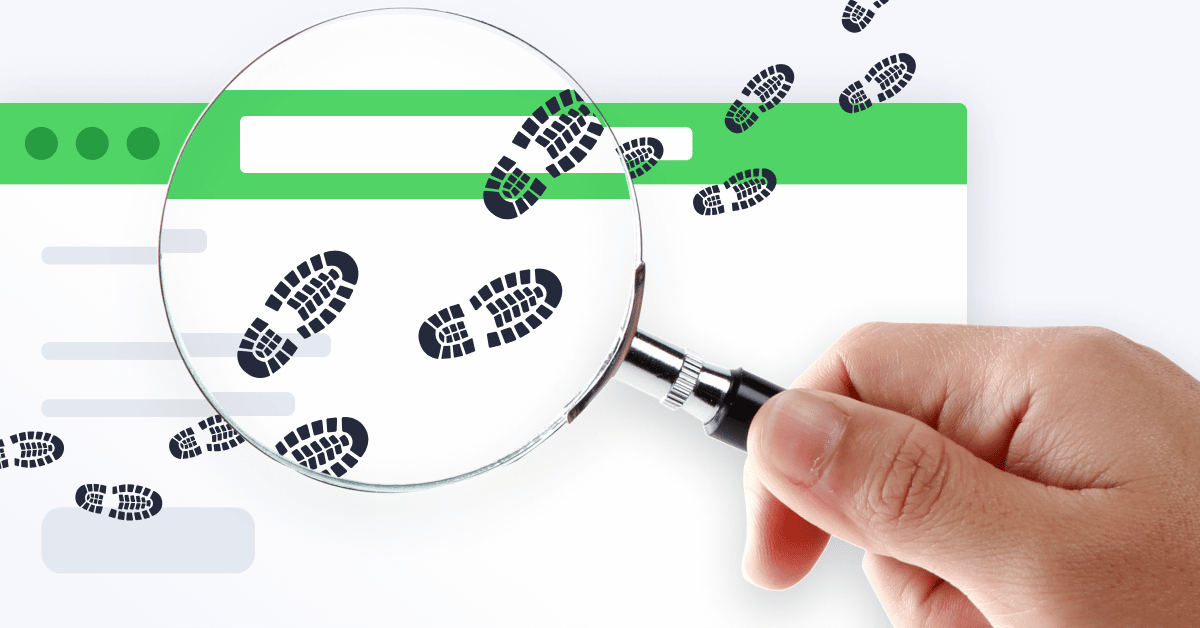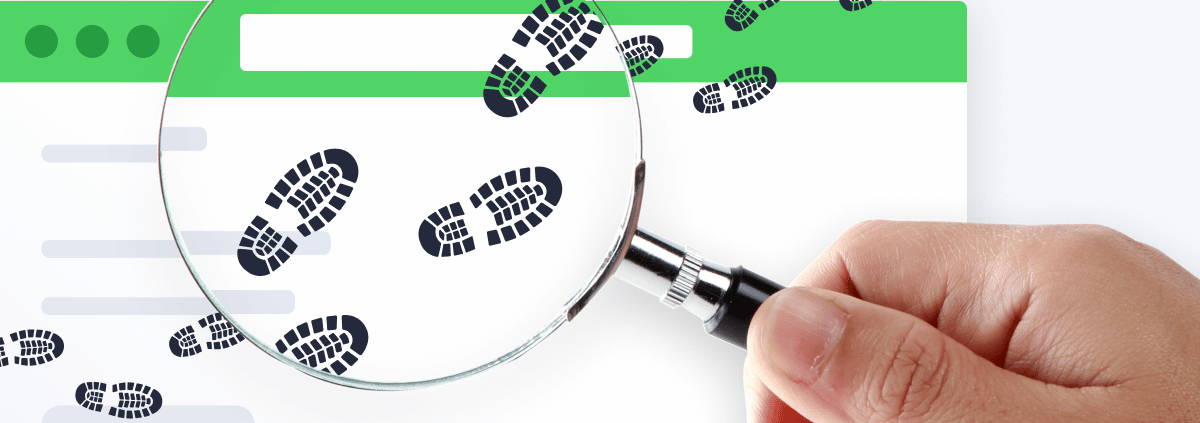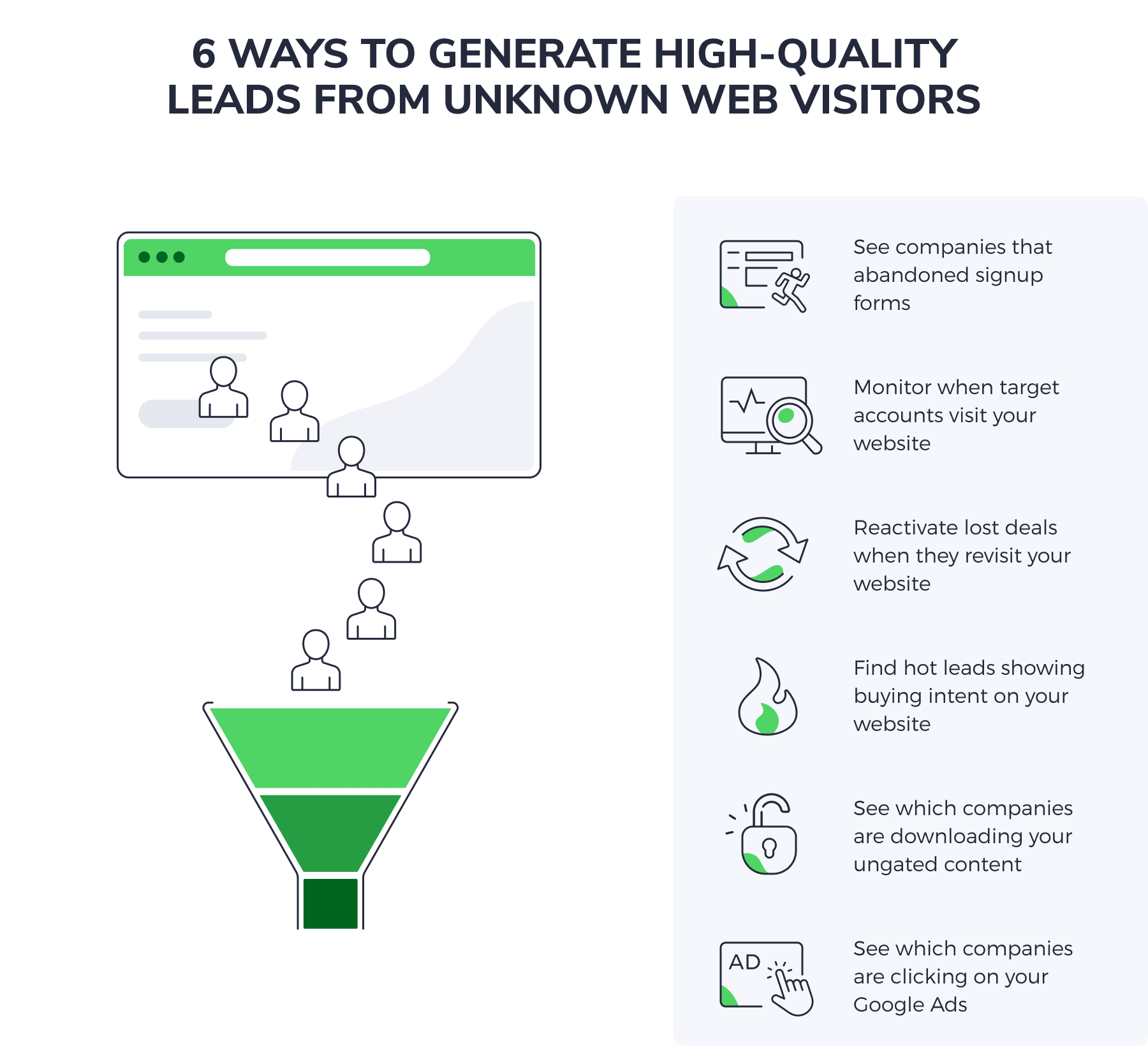How To Convert Your Unknown Web Visitors Into Leads
Romana Hoekstra
For many years, B2B companies have been using their online platforms to generate a small but reliable amount of leads. So, you probably already know how to get leads from your established user database.
But what about all your other web visitors? What about those people that slip through the cracks and are more difficult to track? This is where the true and long-lasting value lies. When you know how to make the most of all your web visitors, you will be able to maximize your business opportunities and increase the potential of the product or service you provide.
In this article, we’ll be exploring everything you need to know about generating high-quality leads from unknown web visitors, so you can also take that next big step.
Why are you missing out on up to 98% of potential leads?
Many marketers and salespeople interact with leads in familiar and a bit “boring” ways. They will see leads come through their websites as new email subscriptions, content downloads, contact or demo requests, and other kinds of form fill. While they might recognize that these leads are a valuable indication of interest in their brand or product, most marketers will also be aware that this interest rarely leads to conversions.
In reality, even the best B2B websites only see around 2% conversion. Of all the people visiting your website and clicking through to the various pages, only 2% of visitors will take the time to fill out a form or contact you. If that 2% fills your sales team’s pipeline to the brim, that’s great. But what about the other 98%? There has to be a way to avoid leaving so much business behind.
How to generate more leads by leveraging your unknown website visitors
It’s no secret that finding high-quality B2B leads is expensive, time-consuming, and full of frustration. Often you can toil all day with a new strategy without any success. Nevertheless, it is worth putting in the effort because it is possible to succeed using modern tools for modern sales teams.
For example, have you heard about web visitor identification software? Yes, it exists and it is a way to efficiently understand and convert anonymous users.
What is web visitor identification software?
Put simply, web visitor identification software is a tool that analyzes your web traffic and provides you with company names that have visited your website. Once you have this information, you can then understand exactly who your web visitors are, and then you can begin to convert them to use your products or services. It is relatively simple: web visitor identification tools will help you catch all the qualified leads that you may be missing out on.
Web visitor identification software enables sales teams to reveal the hidden majority of companies who may visit your website without converting. For example, with web visitor identification software, you can:
- Know exactly which companies are visiting your website
- Get in an in-depth look at the companies that visit your website and receive details about what they do and who they are
- Receive behavioral visit data. This kind of data will allow you to know which pages they visited, how long they spent on the page, how many visits they have made and how many employees from the same company have visited that page
- Align your sales and marketing teams around the same leads, information and accounts with a shared dashboard
- Keep your sales team informed, thereby building their confidence and improving their capacity to hit targets and generate valuable leads
- Easily find the relevant decision-makers and recommended contacts
As you become more comfortable with a web visitor identification tool, you can convert your previously hidden website visits into proper leads. Even if only a small percentage of the new leads turn into customers, you will still have probably doubled or tripled that 2-3% conversion rate. It is an opportunity just waiting to be taken by B2B companies looking to succeed.
As the cost of marketing campaigns continue to rise, and it becomes harder to quantify your overall success, there are many smart ways to stay ahead of the competition and generate new high-quality leads. One of the key areas to focus on is buyer intent data, which can help you understand which leads are ready to convert. It is difficult to assess buyer intent data without first capturing your unknown web visitors.
Below, check out 6 key ways to find those high-value leads who are browsing the web completely unknown to you and your company.
#1 See companies that abandoned signup forms
Yes, it’s possible. You can track those companies that are attracted to your business, and visit your website but end up abandoning the signup form. This group of web visitors is a highly valuable set of potential customers that should be easy to convert with a few tweaks to your conversion process.
Even the best forms may be unable to capture all the data you need to convert your high-quality leads into loyal customers and return visitors. Indeed, research shows that 81% of people have completely abandoned an online form after they’ve started to fill it out. It occurs so often that it is remarkable that there are no more solutions in the market to prevent such valuable lead losses.
With web visitor identification tools like Leadfeeder, you can prevent companies from abandoning signup forms by learning more about their buyer journey. With these tools, you can track companies that leave your forms from the time they arrive at your website to the time they eventually leave. For example, you will be able to see whether a particular path or webpage or visit to a blog leads to more or fewer companies abandoning your forms.
Once you have this information, you can funnel your web visitors into favorable buyer journeys that will decrease the chance of signup form abandonment.
#2 Monitor when target accounts visit your website
We know that it is sometimes hard to know if someone from your target account list is visiting your website. Consequently, it can be difficult to know how to tailor your messaging. When should you approach? What should you say? How can you maximize their potential? These are probably the kinds of questions that frustrate sales teams and send them looking for modern, affordable solutions.
Thankfully, with web identification tools you can simply import a list of target accounts and then receive a notification when they visit your website. This approach is effective because it gives you actionable data that allows you to adjust your strategies and improve your messaging.
Beyond the basic notification, Leadfeeder, as a web identification tool, will also tell you what pages your leads visit, how long they spend on your website and how many people from a specific company are visiting your site. The sales team can then leverage that data and create personalized outreach messages.
#3 Reactivate lost deals when they revisit your website
When you lose a sales deal, you think that’s it. Those deals are lost forever, right? Surely, there is no way, or no point, to track if they happen to visit your website again.
Wrong! A lost sales deal is never lost forever. With web identification tools, you can get notifications when a “lost deal” revisits your website, and this will enable you to get back in contact with them and see whether their interest in your services has returned. Very quickly, you can turn a lost deal into a new success story.
#4 Find hot leads showing buying intent on your website
Is your lead ready to buy? One of the keys to closing a deal and repeatedly securing high-quality leads is knowing when your leads have buying intent. In the past, it may have been difficult to ensure your sales team are at the right place at the right time, but nowadays, the whole process is easier.
Sales tools like Leadfeeder allow you to track hot leads as they visit high-intent pages (pricing page, demo page, etc). With this valuable information, sales teams can get a more comprehensive picture of valuable leads and develop effective strategies to convert those leads into customers.
#5 See which companies are downloading your ungated content
Spoiler: You don’t need to gate content to get new leads!
Usually, marketers use lots of gated content because it allows them to collect information about who is downloading it. The downside is that because of gated content, many online businesses lose plenty of leads simply because they don’t want to “pay” for content with their data.
Thankfully, the solution exists. You can ungate your content while still being able to track and understand the companies downloading it. How? By using web visitor identification software.
#6 See which companies are clicking on your Google Ads
Google ads are a big deal for most marketing teams. A lot of time and money is spent trying to find out how to maximize the potential of Google ads and use them to improve conversion rates. However, today on average only 4% of Google ads lead to successful conversion. So, what’s the solution?
At first glance, the impact of Google Ads is limited because Google only reveals how many clicks you get. You don’t receive information about who is clicking your ads and whether they are in your target audience. This is where Leadfeeder can help.
With Leadfeeder more and more B2B companies are being able to use Google Ads to accelerate their growth and gain valuable insight into their potential customers. Leadfeeder, as a web visitor identification tool, can show you the companies that are clicking on your ads but not converting. Leadfeeder also allows you to dive into the details of your campaigns and see which ad groups are attracting the leads you want.
Summary
There is no longer any need to miss out on 98% of your website visitors. With modern tools, you can identify the potential leads that you are missing out on, get to know those silent web visitors and turn them into real customers. It’s time to make your sales great again!






